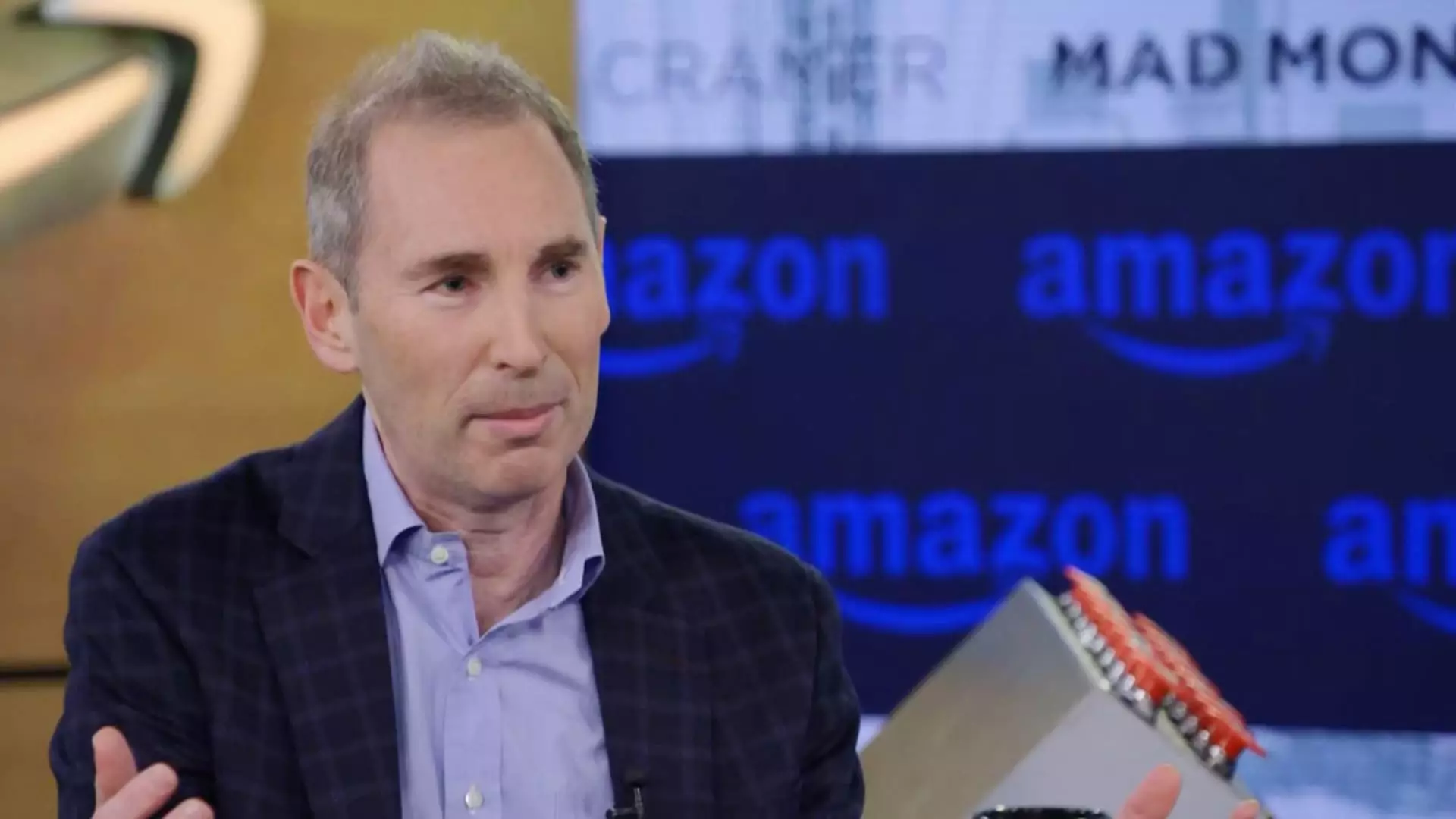In an era where technology and innovation dictate market trajectories, Amazon, under the stewardship of CEO Andy Jassy, is making substantial strides into the realm of generative artificial intelligence (AI). This shift is not merely a peripheral venture but represents core strategic reorientation for the retail giant. Jassy has recently taken to conference calls and earnings reports to reassure anxious investors about the considerable financial commitment Amazon is making in this area, amid an environment defined by skepticism toward extravagant technological expenditures.
The backdrop for Jassy’s reassurances lies heavily within the company’s robust cloud computing sector, Amazon Web Services (AWS). AWS has proven to be a vital revenue stream, despite the massive capital outlays involved in establishing and maintaining extensive data center infrastructures. Jassy’s statement underscores a philosophical approach to innovation: “I think we’ve proven over time that we can drive enough operating income and free cash flow to make this a very successful return on invested capital business.” By paralleling the trajectory of AWS with expectations for generative AI, Jassy communicates a forward-looking viewpoint aimed at reiterating investor confidence.
Remarkably, Amazon’s financial footprints in the third quarter alone reveal a staggering commitment: $22.6 billion was allocated for property and equipment—an 81% increase compared to the previous year. As Jassy lays out plans for capital expenditures of $75 billion in 2024, and potentially higher in 2025, the implication is clear; investment in generative AI isn’t merely an experiment but a centerpiece of Amazon’s future. The urgency in Jassy’s tone reflects the rapid evolution of generative AI’s applications, particularly since the advent of OpenAI’s ChatGPT a couple of years ago, which has increased global interest and ignited fierce competition within the tech landscape.
Jassy described the current moment as “an unusually large, maybe once-in-a-lifetime type of opportunity.” This notion of seizing the moment resonates not just with Amazon’s historical narrative of taking calculated risks that yield long-term rewards, but also with a broader industry trend where decisive capital infusion into emergent technologies may dictate which companies will lead the charge in the years to come.
Amazon’s strategy fits into a larger tapestry of commitment to AI across the technology sector. Companies like Meta and Microsoft are also revising their capital expenditure strategies to accommodate their own investments in AI. While Meta’s CEO Mark Zuckerberg expressed satisfaction with the team’s execution during their earnings call, Microsoft’s substantial financial backing of OpenAI has notably impacted its fiscal performance, underscoring the volatile nature of AI investments.
It’s imperative to view Amazon’s moves as part of a competitive arms race among tech giants. Whereas tech firms once sought to minimize costs and maximize efficiency, the quest for AI supremacy presents a new paradigm—a willingness to engage in high-stakes gambles for potentially transformative technologies. Amazon’s pivots in infrastructure to support AI ecosystems suggest not only immediate operational goals but also a long-term vision for becoming indispensable to businesses keen on harnessing the power of AI for commercial applications.
Despite not disclosing specific revenue figures from its generative AI division, Jassy confidently described it as a “multi-billion-dollar revenue run rate” business nestled within AWS, growing at a spectacular triple-digit percentage annually. Such metrics are impressive, not merely in isolation, but when compared to AWS’s own rate of growth during its early years. This framing plays a crucial role in tempering investor skepticism, painting a picture where the aggressive pursuit of AI effectively mirrors the early days of AWS—a potentially lucrative venture despite upfront costs.
The trustworthiness of such projections, however, rests on several variables including consistent technological advancement, market demand, and the agile capacity to adapt offerings. Amazon has positioned itself uniquely by already catering to clients that need robust infrastructure for generative AI and rolling out relevant AI products for various segments, which suggests not just a reactive stance but a proactive approach in anticipating market needs.
While Jassy’s confident assertions and healthy financial commitments underscore a forward-looking strategy, Amazon walks a fine line. The grand investments in generative AI come with inherent risks, especially given the unpredictable nature of technological advancement and market acceptance. Yet, if history is any guide, Amazon’s willingness to invest boldly— pair with its adaptability— suggests that it aims not merely to participate in the AI revolution but to lead it.
In this unfolding narrative of generative AI, the question remains: Will these significant investments yield sustained long-term growth, or will they become a source of uncertainty in the eyes of investors? Only time will unveil whether Amazon’s ambitious generative AI gambit will establish it more firmly as a leader in the technology space or lead to unforeseen financial repercussions.


Leave a Reply